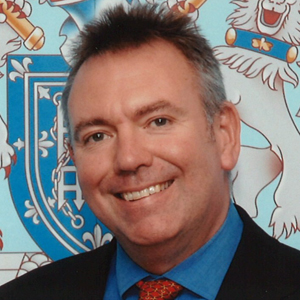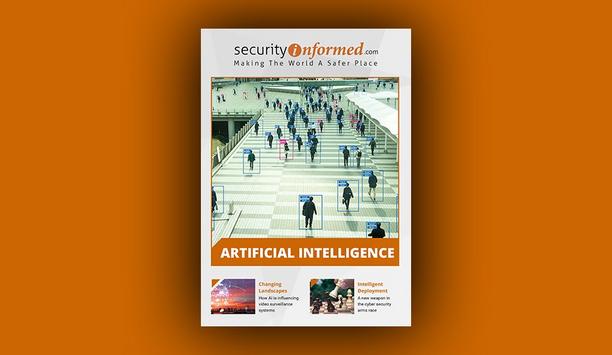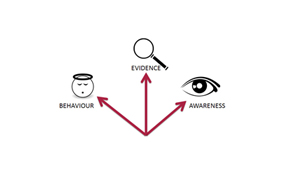 |
| VIIDOS were established to deal with the huge increase in surveillance data available to investigators |
We need CCTV footage to reveal the true story of what happened before, during, and after a crime. We need to put those forensic images before the court in a manner that has integrity and obeys the rules, codes and legislation that have evolved in this rapidly changing digital era. To do that successfully, we must consider all the contributing elements of a CCTV investigation to ensure that they are mutually supportive. Only then can we be sure that we have provided the best chance for the criminal to be locked away, for the court to see the best evidence, and to demonstrate to the detractors of CCTV technology that it provides a vital role within the justice system.
London Metropolitan Police Service
As a detective and trainer working within the CFIT (Central Forensic Image Team) at New Scotland Yard in London, I have seen first-hand how well-used CCTV makes or breaks a case. The approach employed by the CFIT is to give equal weight to mutually supportive elements.
London,UK, is policed by the Metropolitan Police Service (MPS). Before I outline the CFIT approach, we need to identify the key factors that influence the process.
Historically the MPS inLondon, like police forces worldwide, have had highly skilled individuals working within forensic labs. They deal with cases such as murder, rape and terrorist offences that, in terms of proportionality, demand the highest level of expertise and time. In numbers, even in the MPS that has over 45,000 staff, including 32,000 police officers, the number of these highly skilled technically trained staff working in forensic imagery is relatively small.
Overwhelming Volume Of Crime Image Data
A significant challenge has arisen over the last 10 years in the UK, created by the huge increase in data available to investigators. The result has been: too much data and an insufficient number of skilled technical staff to process it. The core forensic lab staff could not possibly cope with the huge volume of crime image data that now needs to be retrieved, viewed and made ready for court presentation.
In the UK we do not have a choice whether we do or don’t collect CCTV evidence. The Criminal Procedure and Investigations Act 1996 places a duty on the police to pursue “all reasonable lines of enquiry” to obtain evidence. With regard to CCTV evidence, all reasonable attempts must be made to retrieve footage from systems. In other words, police can’t simply opt out of collecting evidence.
The core forensic lab staff could not |
CFIT & VIIDO
To solve the huge challenge of massive data collection versus limited trained personnel, Visual Images Identifications and Detection Offices (VIIDOs) were set up from 2006 within the MPS area by the CFIT team led, by DCI Mick Neville. VIIDO units deal with all aspects of CCTV investigation from retrieval through to circulation of unknown suspects and court evidence. Since the creation of the VIIDO units, DCI Neville has led a relentless drive for increased professionalism in the way police handle forensic images in all criminal cases. There are now 16 VIIDO teams withinLondon, with around 100 staff, who work in regional hubs closely linked with specialists from the Forensic lab.
At every level of the organization, with the advent of Body Worn Video and CCTV cameras being installed into police vans that transport prisoners, CCTV has become the hot topic. The current Commissioner of the MPS, Sir Bernard Hogan-Howe has been proactive in calling on us to re-think how we position CCTV to enable better images that can be used effectively with the current generation of facial recognition systems.
Forensic Image Evidence
Let us now identify the elements that must come together to ensure that the forensic image evidence achieves the best result in the court room.
Quality of staff. Having the right person carrying out the role is vital. It is often said that if you want to really test if it is “unbreakable,” you give it to a team of police officers for a week! VIIDO units are now staffed by officers who have a keen interest in technology and the processing of CCTV evidence.
Training. It is essential that officers are trained in retrieval techniques so that they follow best-practice retrieval protocols and that they can produce high-quality, court-ready compilations of video evidence. CFIT is currently developing a qualification for all VIIDO staff in the Production of Forensic Images for Evidential Purposes.
Systematic process. Images that are created from CCTV in order to obtain an identification of a suspect follow an identical path from creation to courtroom. The image is placed onto a database where it is allocated a URN identifier. From that point the image can be circulated to internal publications, posters and the media. An electronic audit trail of that image is created. Once the subject is identified, the checks to assist in determining the validity of the recognition come together in the form of an electronic docket which can be monitored all the way through to judicial disposal.
Sir Bernard Hogan-Howe has |
Use of the human element. Within CFIT, a small team works with officers who have a proven ability to identify suspect images from previous interactions or from intelligence briefings. These officers have become known as “Super Recognisers,” and their skills are being researched by Dr. Josh Davies, Senior Lecturer in Psychology at the University of Greenwich in London, UK. Approximately 100 MPS officers with this ability have provided over 6,000 suspect image identifications over the last three years. In one case the image of a man suspected of the rape of an 11-year-old child was identified within four minutes of the image being emailed to an individual super recogniser. The man was immediately arrested, charged and received a long prison sentence.
Compliance with legislation. To ensure the integrity of investigations, VIIDO staff are trained in all aspects of legislation and codes of practice relating to CCTV so they can provide guidance to colleagues.
Relationships with CCTV partners. Staff are encouraged to build relationships with CCTV partners such as CCTV control rooms, transport companies, security staff, etc., and to provide feedback when they provide assistance to police.
Keeping up with innovation. It is essential that police specialists in CCTV know what is happening within the industry. CFIT staff attend conferences in the UK to keep up-to-date with the latest technology.
We must pick the right person for the job, train and continually assess staff to maintain standards, follow a systematic forensic process, and use human skills as well as innovative technology. We must also follow the legislative requirements and codes of practice, build relationships with those who assist police and keep up-to-date with developments in the sector. Combining these elements enables a robust investigation process that will give us the best chance of success in the courtroom.






















